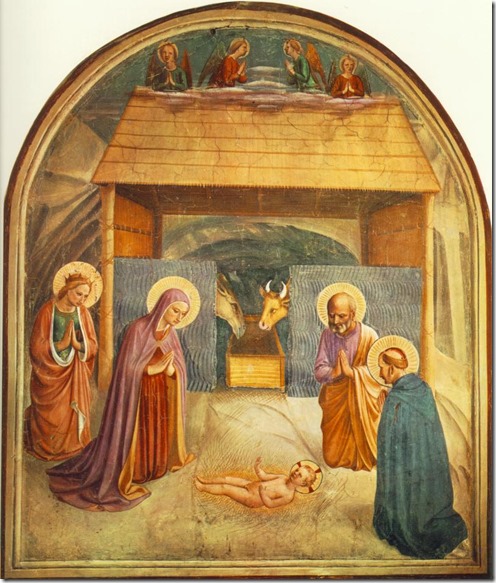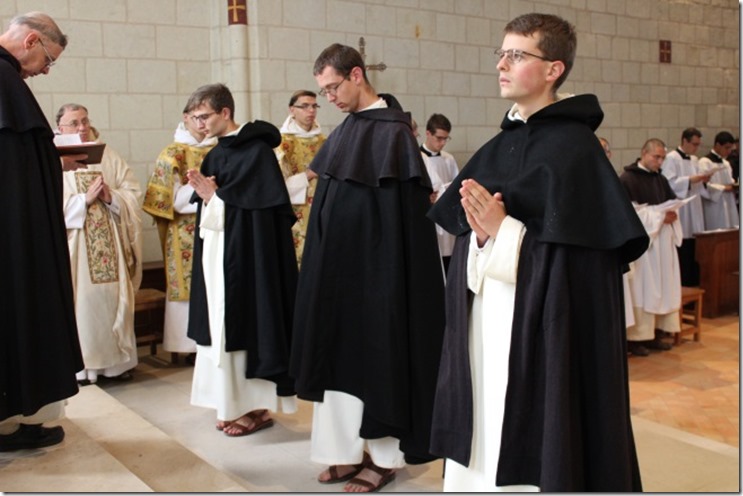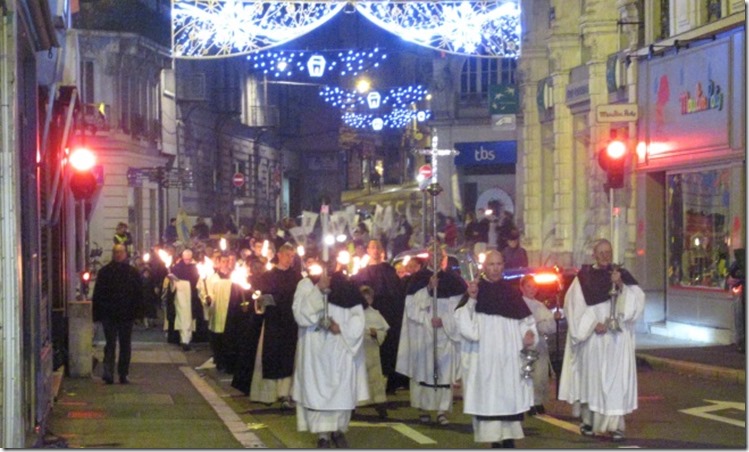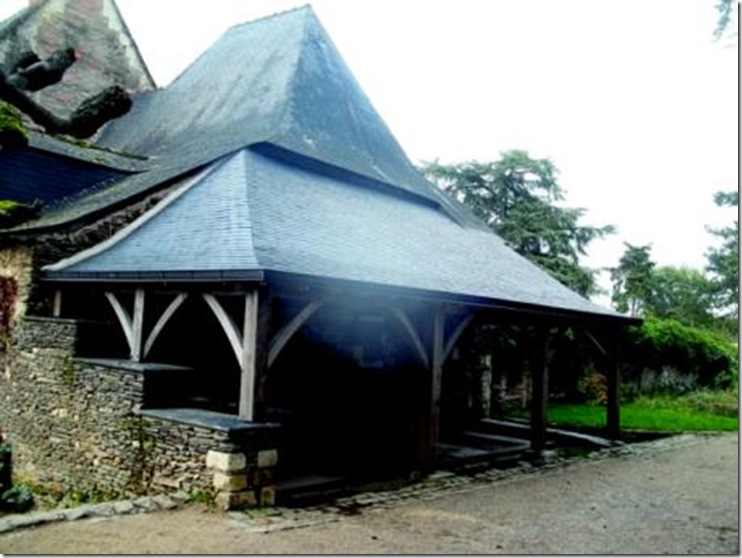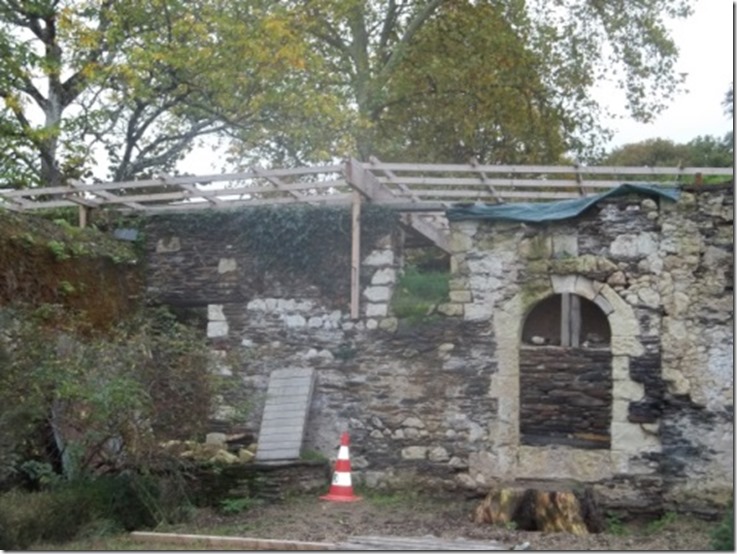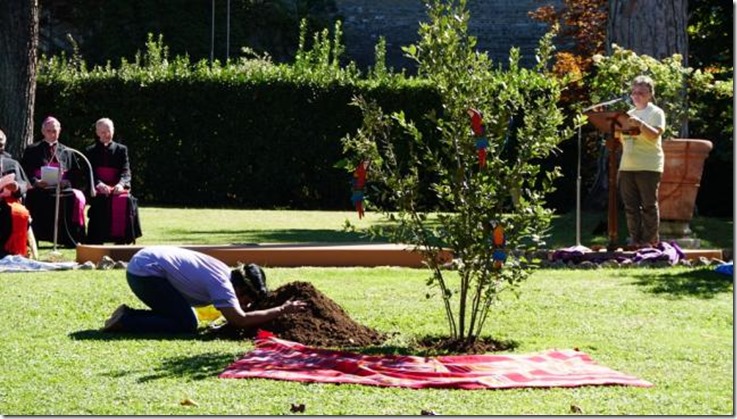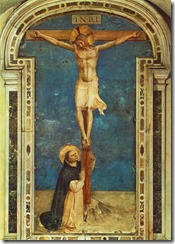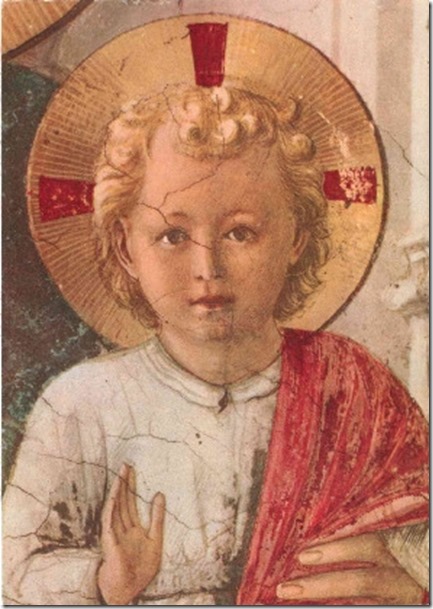Letter from the Dominicans of Avrillé
No. 33: January 2020
Between the Donkey and the Ox
The Blessed Virgin Mary was in no way subject to the travails of childbirth; she could have held the Divine Infant tenderly in her arms, or on her breast: why then did she lay Him down between two animals? Our Lady had three reasons for this: that the Scriptures may be accomplished; to comfort her Son; and to teach us a moral lesson.
1) It was prophesied that the Messiah would be placed between two animals so that they may adore Him. Just imagine, then, the joy of the Blessed Virgin in seeing her Son being adored by the ox and the donkey! And what must have been Her sorrow in seeing Him rejected by the Jews? Thus was accomplished the prophecy of Isaiah, saying:
Hear ye, O heavens, and give ear, O earth, for the Lord hath spoken. I have brought up children, and exalted them; but they have despised me. The ox knoweth his owner, and the donkey his master’s crib; but Israel hath not known me, and my people hath not understood. (Isaiah Ch. 1]
2) The Virgin also laid Her Son in a manger so that the animals could warm Him with their breath […].
3) Furthermore, the Virgin wanted to give us moral instruction.
-
Firstly, the ox is a large animal equipped with two horns, representing the temporal and spiritual powers. The donkey, which carries the burden, represents those who submit to these powers. The Virgin placed Her Son in the middle of the two to show that all can be saved […].
-
Secondly, the ox is a pure animal offered in sacrifice by the priests under the Old Testament. It therefore represents the priests, whereas the donkey represents the laymen. The Virgin placed Her Son between the two, showing thereby that all men can be saved.
-
Also, the ox, which doesn’t carry the burden, symbolize the rich, who do not work with their hands. The donkey symbolizes the workers who imitate his patience.
-
Fourthly, the ox equipped with horns signifies devout people, fortified by virtues. The donkey, which does not have horns, signifies sinners who nonetheless can be saved, if they do penance.
-
Lastly, the ox, which ruminates and has a hoof split in two, represents those who are learned in Holy Scripture: they ruminate in study, and have knowledge of both Testaments. The donkey represents the ignorant. Christ is placed between the two, thereby fulfilling the prophecy of the psalmist:
Homines et jumenta salvabis Domine, quemadmodum multiplicasti misericordiam tuam! Men and beasts thou wilt save, O Lord: O how hast thou multiplied thy mercy! [Ps. 35]
All men, whether powerful or weak, learned or rich, are as beasts of burden… that is, blind and hardened sinners that You, Lord, have come to save!
Community Chronicle
September 14th: Pontifical High Mass, during which H.E. Bishop Faure confers the sub-diaconate to Br. Agostinho (from Brazil), and the diaconate to Br. Alain (from Canada).
The order of sub-deacon includes the implicit vow of perpetual chastity, and the recitation of the breviary. For religious, these obligations start already with the pronouncement of perpetual vows. At Solemn High Mass, the sub-deacon presents the chalice and paten to the deacon, pours the drop of water in the chalice, and sings the epistle. He is also charged with the purification of the altar linens.
The order of deacon is a sacrament. The deacon is the minister of the bishop and the priest at the altar. He sings the Gospel, and may be authorized to preach. In certain cases, he is the “extraordinary minister” of Baptism and Holy Communion.
September 23rd: Solemn High Requiem Mass for the repose of the soul of Mrs. Kobayashi (mother of our Br. Nishi), who passed away in Japan a week earlier.
October 19th: Solemn High Mass for the habit-taking of two clerical brothers – destined for the priesthood – and one “oblate brother.” Such is the name given to a layman freely offering himself to a life of service in the Friary. He wears the same habit as the professed lay brothers (except when he’s away from the Friary), and he is affiliated to the Third Order. The most famous of these oblate brothers is none other than St. Martin of Porres (1569-1639). By humility, he considered himself unworthy of professing religious vows until he was obliged by obedience to do so.
October 26th: Our student brothers join the seminarians for a pilgrimage to Alençon and Lisieux, in the footsteps of St. Theresa.
November 3rd: Fr. Marie-Laurent presides a procession in the streets of Angers, from the Cathedral to the Church of the Holy Trinity, in public reparation for the idolatrous worship of the “earth goddess” (Pachamama) in the Vatican gardens, in the presence of Pope Francis. A good number of faithful joined with the seminarians and the young people from “The Friends of the Sacred Heart” for the ceremony.
“Of all sins, idolatry is the gravest. This is because in and of itself, no matter what the interior intention is of the person who is acting, idolatrous worship is a negation and destruction of the Divine Being in that which distinguishes it from all other: that is, precisely the fact of being unique and absolutely without rival.” (Fr. Pègues O.P., commentary of the Summa Theologica)
November 8th: Fr. Marie-Laurent is in Ireland to replace Fr. Ballini for the weekend: Masses and preaching in Cork, Tralee and Longford.
November 24th: The yearly winter market for the benefit of St. Philomena’s School has now been transferred outside, due to the growing number of faithful overflowing into the vestibule during the Sunday Masses. Fortunately we were graced with good weather, but we’re hoping that the construction of the Parish Hall will soon provide us with a more secure solution.
December 8th: Procession in Angers for the feast of Immaculate Conception.
News From Our Worksites
In waiting for the construction permit that will allow us to finally launch the work on our Parish Hall Project (with the much needed cafeterias for the two schools), we’ve been able to make a few improvements on the grounds of the Boys’ school: installation of a covered porch:
and a temporary roof to protect what’s left of an ancient tower (which is set to be renovated, in order to serve as a study hall):
Crisis In The Church
In October of 2019, a synod took place in Rome, with the theme “The Amazon: new paths for the Church […].” The preparatory document indicated already that “to announce Christ supposes listening respectfully to the natives in their intimate relation with nature and Mother Earth.” In order to render the synod’s objectives more tangible, Francis decided to inaugurate the gathering with a ceremony in the Vatican gardens.
“Representatives of the indigenous peoples” from the Amazon placed their idol of Mother Earth on a blanket, along with, among other curiosities, the statuette of a serpent…
After various pagan rites accomplished by the natives, the Pope planted a tree while a priestess raised a “bowl of offering” toward the sky.
Ednamar de Oliveira Viana (this priestess, who organized the ceremony) explained on the same day the meaning of this act: “To plant is to believe in a life that grows and is fertile, in order to satisfy the ‘creation hunger’ of Mother Earth. That brings us back to our origin, by a re-connection with the divine energy.”
These pagan ceremonies being performed before the Pope cry vengeance from Heaven. However, let us remember that this is only the logical conclusion of Vatican II’s heresy of Ecumenism: if all religions are on an equal footing, what’s wrong with worshiping Mother Earth?
For timely articles and spiritual reading, please go to our website:
To send a donation:
YOU MAY USE PAYPAL (ON OUR WEBSITE), OR SEND TO:
— In the U.S.:
Dominicans of Avrillé, Inc.
P.O. Box 23, Newman Lake, WA. 99025
— In Canada:
Association of St. Dominic
CIBC, 201-21 Street East
Saskatoon (SK) S7K OB8 Canada
Please include a note, and specify:
acc. #40-91531
— In the U.K.:
Association of St. Dominic
R B S Edinburgh, 17 Comiston Road
Edinburgh EH10 6AA
Please specify: acc. # 00105564
For more information :
Couvent de la Haye-aux-Bonshommes
49240 Avrillé, France

